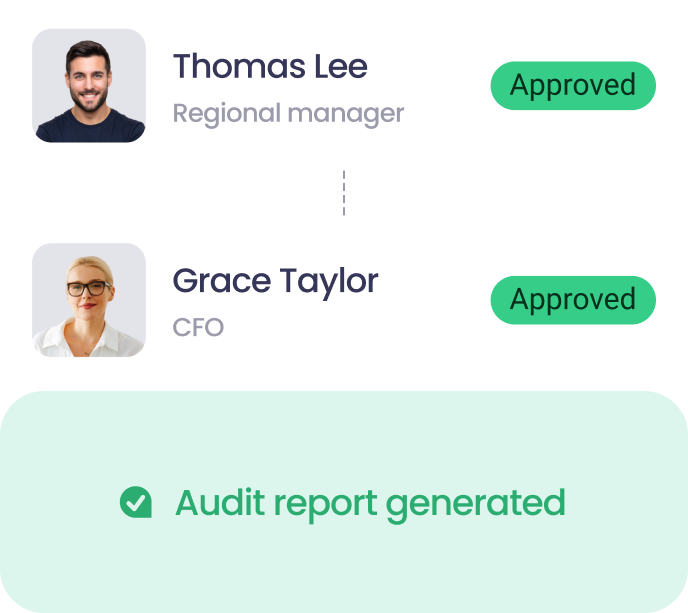
Five tips to protect your business from financial fraud
As scams and fraud evolve, it's essential to stay up-to-date on the latest threats and best practices for managing financial risk. Here are our top tips for protecting your business and keeping your team in the know.
The risk of financial fraud is always a top priority for business owners. Regardless of the checks and balances, policies and security measures in place, it’s hard to not worry about the ‘what ifs’.
Emerging technologies like AI mean cybercriminals and scammers can move faster than ever before, creating fake invoices in just seconds. The financial fraud landscape is constantly evolving and that means your processes must evolve too. What worked in the past might not cut it in the future.
Robert Brooker, Director at Opus Forensic Accounts, says “We’ve all heard of software as a service. Now we’re seeing fraud as a service. Cybercriminals are offering pre-packaged scams, even using tools like ChatGPT or WormGPT, to help amateurs commit fraud.”
What are the most common types of financial fraud?
There are a wide range of fraud tactics targeting businesses globally. As the financial fraud landscape continues to evolve, we see a wide range of fraud tactics impacting businesses globally. The most common are business email compromise, fake invoices, unauthorised or duplicate payments, fictitious vendors, expense reimbursement fraud, and manipulated approvals.
Lets look at some of the most common types of financial fraud:
1. Business email compromise: Scammers use email to trick businesses into sending money or sensitive information to fraudulent accounts. This often involves impersonating a trusted figure, such as a CFO or CEO, vendor, or colleague, often through a spoofed or hacked email account.
2. Fake invoice scam: The scammer sends a fraudulent bill, often posing as a legitimate vendor, to trick a business into paying money to a bogus account.
3. Unauthorised, duplicate payment: This involves tricking a company into making multiple or unapproved payments, even when goods and services were never received, or asked for.
4. Fictitious vendor scam: This is when fraudsters create a fake supplier and submitting made up invoices to trick a company into paying for goods or services that were never delivered.
5. Expense reimbursement fraud: When an employee submits false or inflated claims for personal expenses as if they were legitimate business costs to receive unwarranted reimbursement.
6. Manipulated approvals: Altering or faking authorisation processes to fraudulently approve payments, purchases, or access without proper oversight.
Scary, right? Scammers exploit weaknesses in internal processes. Because of this, it’s vital to have a thorough understanding of how you can protect yourself and your business with stronger financial controls.
Five tips for business fraud protection:
1. Build approval workflows that ensure all supplier invoices are reviewed and approved by the appropriate people before payment is made, preventing fraudulent or unathorised payments.
2. Educate your employees on common fraud tactics and let them know how they should respond. A common example we’ve seen recently is a phishing scam that involves someone impersonating a team member asking them to buy gift cards. It’s important to educate your team on red flags to watch for, such as invoices sent to unusual contacts or outside normal processes. Set up a designated person in your team to head this up.
3. Technology is your security focused teammate! Use tools such as ApprovalMax alert and notify your team in real-times when potential fraud is detected such as bill duplication or an authorised vendor, or when approval processes are bypassed. ApprovalMax blocked a total of 56,856 invoices globally totalling $558,804,395.25 AUD, while 13,752 invoices were blocked in Australia alone.
4. Have a clear incident response plan in case of a fraud incident. This should include steps on immediate response, internal notification protocol, an investigation process, and external notifications (if required).
5. Stay up to date with the latest trends and technologies in fraud prevention. Fraud tactics are constantly evolving and outdated defenses can leave organisations highly vulnerable.
By taking these steps, you can help protect your business from the latest financial fraud threats and keep your finance processes secure.
Want to learn more about how ApprovalMax can help strengthen your fraud controls?
Approvalmax is an all-in-one B2B software platform used by businesses around the world to build robust AP and AR automation, creating multiple layers of internal control. It streamlines the approval process by allowing users to create automated workflows to approve bills and invoices. ApprovalMax integrates with accounting platforms such as Xero, QuickBooks Online, and Oracle NetSuite to unlock powerful efficiencies for accounts payable and accounts receivable functions in any finance team.
Set up a system of checks and balances for your financial operations.
Multi-step, multi-role approval workflows for financial documents.

Auto-generated audit reports for each approved item.

Get alerts for fraudulent activity and protect against it happening.
Leave printing in the past with fully digitised workflows.


